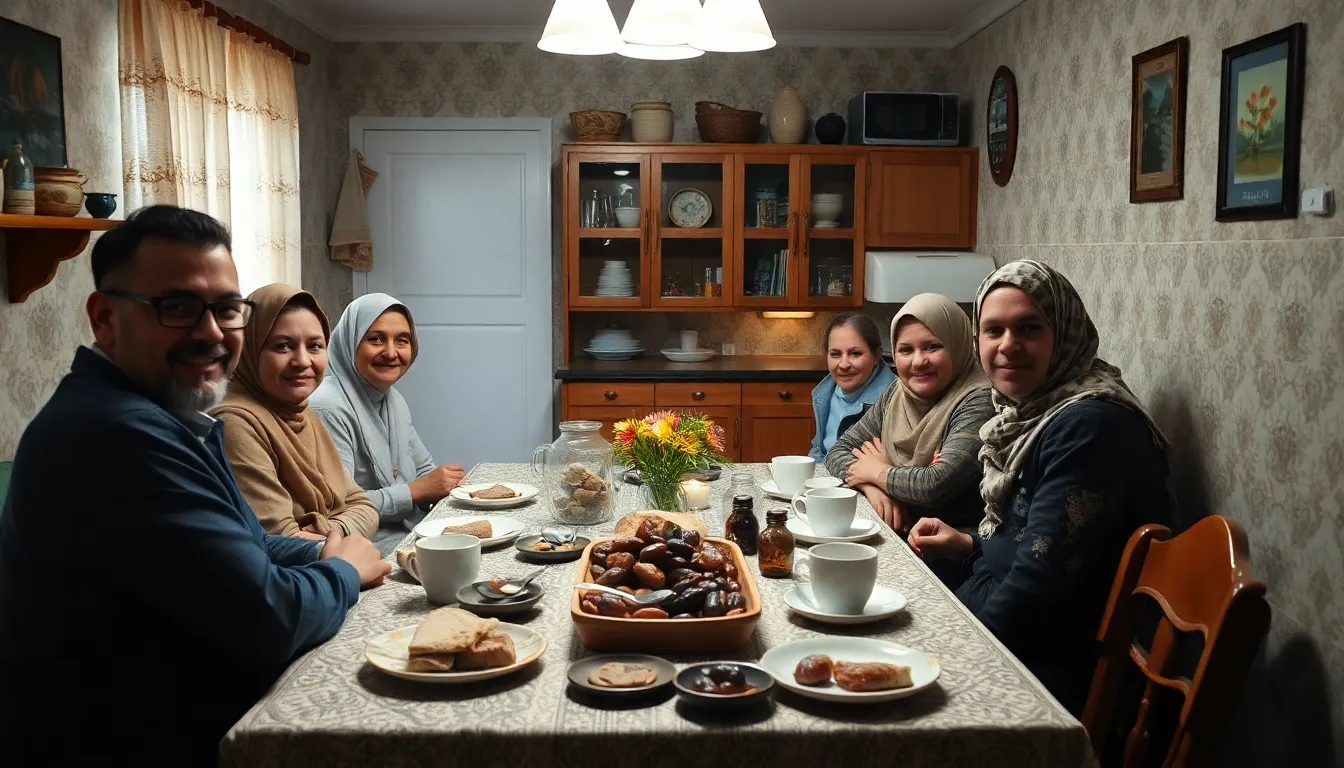Table of Contents
ToggleIn the vast universe of memes, few have sparked as much joy and confusion as the “tung tung tung sahur” meme. This quirky phrase has taken social media by storm, making late-night snackers and early risers chuckle alike. But what’s the story behind this catchy slogan?
Overview Of The Tung Tung Tung Sahur Meme
The “tung tung tung sahur” meme originated from a viral video featuring a comedic character who enthusiastically calls for sahur, the pre-dawn meal during Ramadan. Social media platforms popularized the catchphrase, capturing the essence of the humor and excitement associated with late-night eating.
Users on various platforms created remixes and parodies, embedding the phrase into different contexts. Each adaptation highlighted the universal experience of staying up late to enjoy a meal before fasting begins. Screenshots and video clips spread rapidly, facilitating engagement and sharing.
Prominent figures in memes utilized the phrase to express relatable sentiments. Memes often depict funny scenarios surrounding late-night cravings, showcasing characters in humorous predicaments. This relatability further fueled the meme’s spread, attracting a wide audience.
The phrase resonates deeply with those observing Ramadan, illustrating both the joy of communal meals and the light-heartedness of the fasting experience. Specific moments of surprise and joy from the original video captured hearts, leading to countless creative adaptations across social media.
Notably, TikTok and Instagram serve as major hubs for this meme. Content creators harness the catchy phrase in their posts, appealing to users who seek humor amidst their fasting endeavors. Through dance challenges and skits, the phrase maintains its cultural significance while evolving with each iteration.
In essence, the “tung tung tung sahur” meme reflects a blend of cultural tradition, humor, and community, positioning itself as a staple within contemporary meme culture during Ramadan.
The Cultural Context Behind The Meme

The “tung tung tung sahur” meme highlights important cultural elements associated with Ramadan and modern communication.
Significance Of Sahur In Ramadan
Sahur holds great significance during Ramadan, functioning as the essential pre-dawn meal for Muslims. This meal provides nourishment and energy for the day of fasting ahead. Engaging in sahur fosters a sense of community, as families and friends often gather to eat together before dawn. It symbolizes both spiritual and physical preparation for the day, reinforcing the values of discipline and reflection celebrated during this holy month. Observing sahur connects individuals to their faith while enhancing social bonds, making it a cherished tradition for many.
Popularity Of Memes In Modern Communication
Memes thrive in modern communication, serving as relatable expressions of shared experiences. They provide humor and commentary on everyday life, making complex ideas accessible. The ease of creating and sharing memes on platforms like TikTok and Instagram accelerates their spread among diverse audiences. With strong visual appeal, memes capture attention quickly, engaging users who enjoy entertainment while connecting to cultural moments. The simplicity of the “tung tung tung sahur” meme exemplifies how current trends resonate within the digital landscape, transforming personal experiences into viral sensations.
The Origin Of The Tung Tung Tung Sahur Meme
The “tung tung tung sahur” meme’s journey began with a viral video. This comedic clip featured a character exuberantly announcing sahur, effectively bringing laughter to the midnight hour.
Analysis Of The Initial Spread
Content creators across various social media platforms quickly adopted the phrase. Individuals shared remixes and parodies, amplifying the slogan’s reach. During Ramadan, late-night snackers resonated with the humor attached to pre-dawn feasting. Videos on TikTok and posts on Instagram showcased this catchphrase, creating a buzz that captivated viewers. Audiences tended to create variations that highlighted their unique perspectives. The connecting thread in these creations often included scenarios reflecting late-night cravings, ensuring widespread relatability.
Key Figures In The Meme’s Development
Several influencers played pivotal roles in popularizing the meme. Notable figures in the digital landscape shared their versions, further solidifying its presence online. Comedians and content creators infused the catchphrase into entertaining skits, making it part of everyday conversations. This involvement drew in diverse audiences, fostering community engagement through shared humor. As prominent personalities embraced the meme, they amplified its popularity within and beyond the Ramadan context. Key influencers ensured that the catchphrase resonated with users who found joy in the late-night ritual of sahur.
Variations And Adaptations Of The Meme
Numerous variations of the “tung tung tung sahur” meme emerged as content creators adapted the original concepts. Users frequently crafted remix videos that incorporated the phrase into diverse scenarios, showcasing everything from humorous cooking mishaps to exaggerated late-night cravings. Each adaptation carried a unique twist, resulting in an expanding array of interpretations that catered to different audiences.
Parodies of the meme highlighted cultural nuances, often incorporating local languages and customs. Many creators infused their regional elements, transforming the meme into a reflection of distinct culinary traditions associated with sahur. In one variation, the original video received localized captions that resonated with viewers, enhancing relatability while maintaining the humorous tone.
Popular influencers leveraged the meme’s catchiness in skits and social media challenges, further broadening its reach. They often used the catchphrase during commentary on Ramadan-related experiences, reinforcing community engagement. Creative collaborations with other meme formats, such as reaction videos and mini-dramas, also spurred widespread participation from various demographics.
Social media platforms served as fertile grounds for meme evolution. TikTok users specifically excelled in remixing sounds and clips, generating new content that attracted viewers eager for fresh iterations. Instagram stories often featured their own adaptations, with users showcasing late-night meals alongside the meme for added context.
This phenomenon emphasized the communal aspect of sahur. The collective humor connected individuals during Ramadan, often inspiring traditions surrounding late-night gatherings. Innovative remixes, clever adaptations, and localized narratives marked the continued evolution of the “tung tung tung sahur” meme, solidifying its place in contemporary online culture.
The “tung tung tung sahur” meme has become a vibrant part of social media culture during Ramadan. Its catchy phrase and humorous context resonate with many who cherish the late-night ritual of sahur. As it continues to evolve through various remixes and adaptations, the meme strengthens community bonds and highlights shared experiences.
The joy and laughter it brings to users reflect the significance of sahur beyond just a meal. It encapsulates the spirit of togetherness and celebration during this holy month, making it a memorable phenomenon in the digital landscape. The ongoing popularity of this meme showcases the power of humor in connecting people across cultures and traditions.







